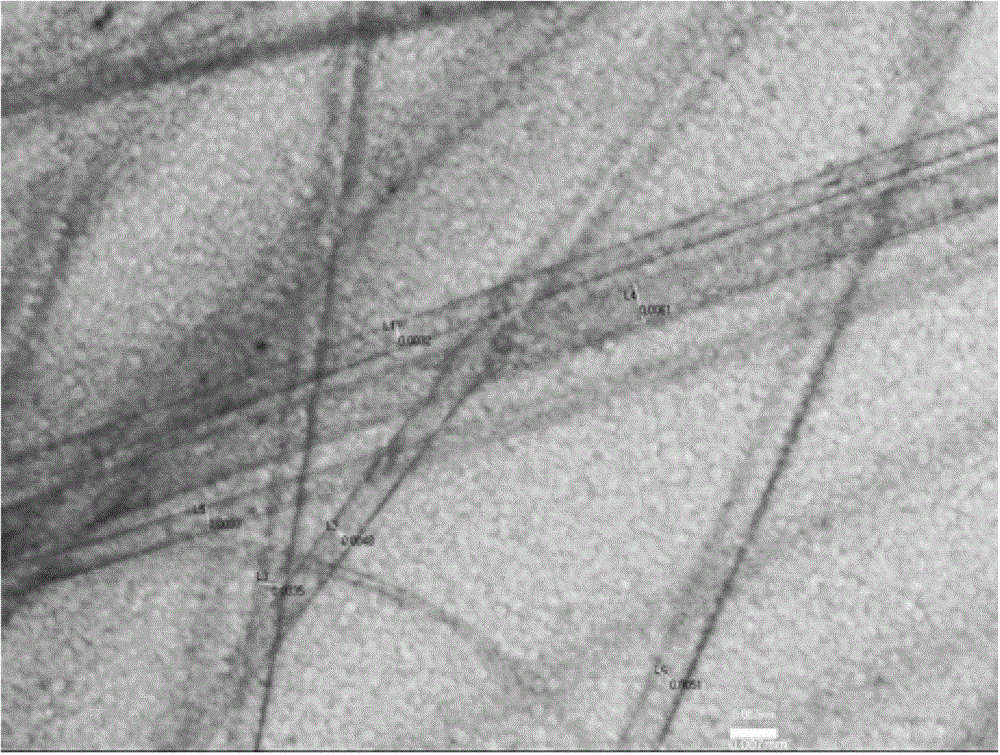Inorganic fiber using fly ash as main raw material and manufacturing method thereof
A technology of inorganic fibers and main raw materials, applied in the field of inorganic fibers and their manufacturing, to achieve the effects of high acidity coefficient, good water resistance and durability, and low thermal conductivity
- Summary
- Abstract
- Description
- Claims
- Application Information
AI Technical Summary
Problems solved by technology
Method used
Image
Examples
Embodiment 1~9
[0086] Preparation of fly ash block:
[0087] See Table 1 and Table 2 for the composition and characteristics of the fly ash raw materials and flux used in Examples 1 to 9, and see Table 3 for the raw materials used in each embodiment and their proportions and technical parameters. The loss on ignition at 900°C is the test value after 1 hour of ignition.
[0088] The cement used in Examples 1-9 is ordinary Portland cement, wherein Example 5 is P·O42.5, and the remaining examples are P·O32.5R.
[0089] The grade of polyvinyl alcohol used in Examples 1-9 is 1799, and the degree of alcoholysis is 99.96%. The mass percentage concentration of polyvinyl alcohol PVA in its aqueous solution is shown in Table 3.
[0090] See Table 4 for the mass percentage composition and bulk density of the fly ash blocks obtained in Examples 1 to 9 after being cured for 4 days under the condition of sunshade and rain protection. Wherein the bulk density of the block of embodiment 3 is the test valu...
Embodiment 1~9
[0093] Table 2 Example 1-9 Flux mass percent composition and particle size
[0094]
[0095] Table 3 Examples 1 to 9 Block Proportion Mass Percentage and Technical Parameters of Raw Materials
[0096]
[0097] *A mixture of F8 and F4 with a mass ratio of 8:5.
[0098] Table 4 The mass percent composition and bulk density of the fly ash blocks of Examples 1 to 9
[0099]
Embodiment 10~19
[0101] Preparation of inorganic fibers:
[0102] See Table 3 and Table 4 for the mass percent composition and characteristics of the fly ash blocks used in Examples 10-19.
[0103] The mass percent composition and characteristic size of flux and coke used in Examples 10-19 are shown in Table 5, wherein the heat value of coke is 7623kcal / kg.
[0104] Fiber-forming technical parameters of Examples 10 to 14: four-roller centrifuge, the line speed of the lowest roll is 27.3m / s, and the line speed of the highest roll is 5.5 times of the line speed of the lowest roll.
[0105] Fiber-forming technical parameters of Examples 15-19: four-roller centrifuge, the line speed of the lowest roll is 33m / s, and the line speed of the highest roll is 4.6 times of the line speed of the lowest roll.
[0106] See Table 6 for the formula ratio of fly ash block, flux and coke used in Examples 10-19, the nature and amount of hot air, the melting time and the residence time after the melt is released ...
PUM
| Property | Measurement | Unit |
|---|---|---|
| size | aaaaa | aaaaa |
| size | aaaaa | aaaaa |
| size | aaaaa | aaaaa |
Abstract
Description
Claims
Application Information
 Login to View More
Login to View More - R&D
- Intellectual Property
- Life Sciences
- Materials
- Tech Scout
- Unparalleled Data Quality
- Higher Quality Content
- 60% Fewer Hallucinations
Browse by: Latest US Patents, China's latest patents, Technical Efficacy Thesaurus, Application Domain, Technology Topic, Popular Technical Reports.
© 2025 PatSnap. All rights reserved.Legal|Privacy policy|Modern Slavery Act Transparency Statement|Sitemap|About US| Contact US: help@patsnap.com



